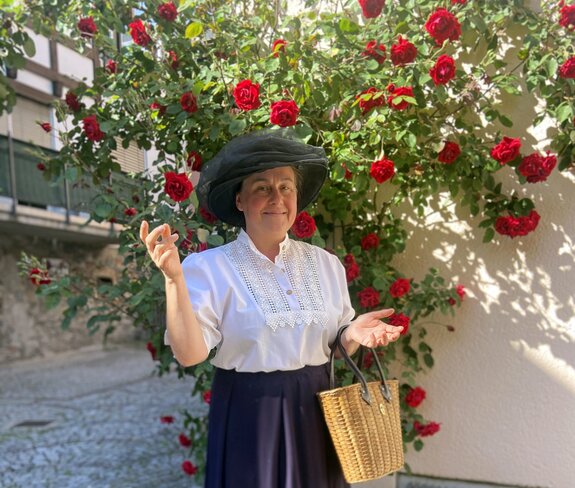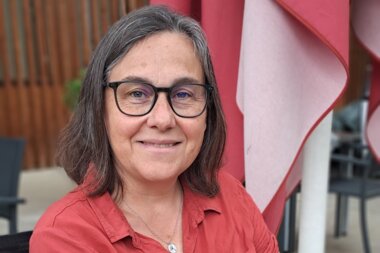
The old town as a stage
"Haldagreteli" - an unusual woman
In the theater city tour through Bludenz, participants experience the history of the city from a very special perspective. Marlies Bahro slips into the roles of historical figures, including Grete Gulbransson from Bludenz, also known as "Haldagreteli". In our conversation, Bahro talks about the impressive life story of the writer and local poet, who was considered an extraordinary woman of her time and left behind a valuable literary legacy with her diary entries. But she also talks about her own passion for theater and acting - an art that always offers Bahro new discoveries and perspectives.
During the theater city tour through the old town of Bludenz, participants meet historical figures from the city's history. Who do you play?
I play two roles: Grete Gulbransson and a leper.
Who was Grete Gulbransson?
Grete, actually Margarethe, was born in Bludenz in 1882 as the daughter of the painter Jakob Jely and his wife Wanda, who was born Baroness von Pöllnitz. She grew up in the so-called "Halde" and was therefore called "Haldagreteli". She later became famous as a writer and local poet.
Was that an unusual career for a woman at that time?
Yes, I think so. Her parents brought her into contact with culture and art as a child and she was already interested in literature, especially poetry, in her youth. Grete's parents died quite young. After their death, the then 19-year-old settled in Munich, where she eventually made contact with the legendary Simplicissism circle around the publisher and cultural patron Albert Lange. The illustrious circle also included literary greats such as Hermann Hesse and Thomas Mann. It was in the circle of these artists and writers that she met and fell in love with her future husband, the Norwegian painter and caricaturist Olaf Gulbrannson.
But Grete's life path led her back to Vorarlberg?
Exactly. In the 1920s, she rented out the house in Munich and the Gulbrannsons' center of life shifted to Vorarlberg, Grete's home.
What is Grete Gulbransson's literary legacy?
The family saga "Beloved Shadows" became particularly well known. But Grete's diary entries are particularly interesting for posterity. In them, she doesn't only write about herself, but also provides detailed insights into everyday life at the time and into cultural events both in Vorarlberg and internationally, such as in Munich, Vienna, Berlin, England and Norway. Grete also described her diaries, over 200 volumes in total, as her life's work.
The character of Grete Gulbransson also gives the participants of the theater tour something to take with them...
Yes, they receive a poem written by her, which is intended to remind them of the nature of Vorarlberg and at the same time of a special person. Poems can be interpreted in many ways and everyone will find something different between the lines.
You have been performing on stage for many years, you also direct plays yourself and are the chairwoman of the Ludesch theater group. What appeals to you about acting?
I always find the opportunity to slip into many different roles and perhaps discover new sides to myself fascinating and exciting. You explore the facets of your own personality, so to speak, and grow beyond yourself at the same time.

